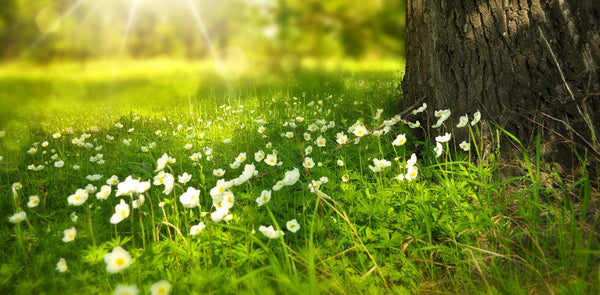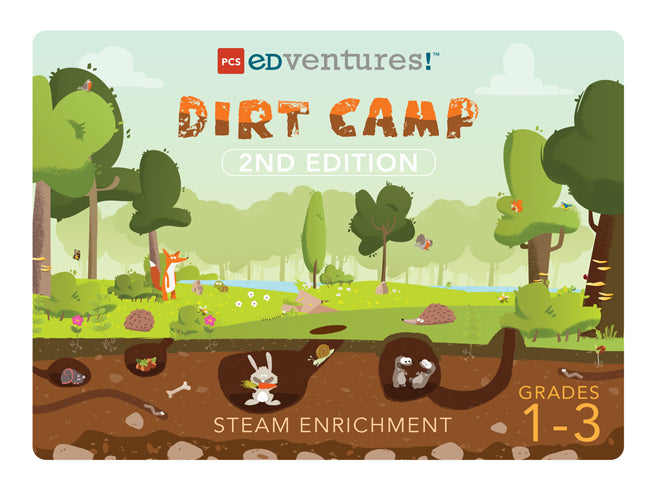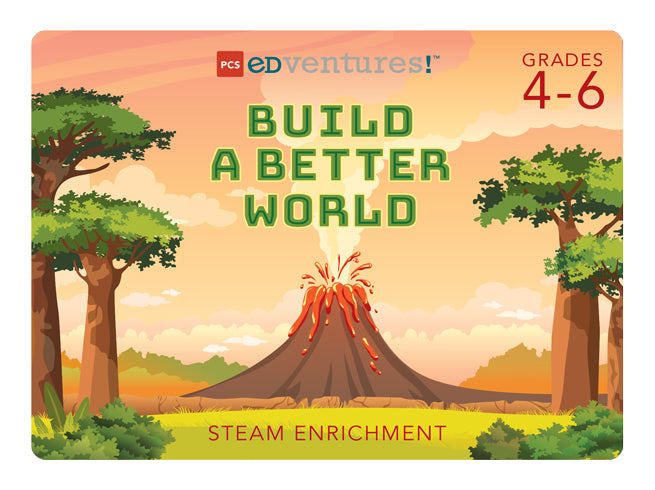
Make Environmental Education a Year-Long Effort
Earth Month gets eco-friendly conversations started. Each April, learners and educators focus on ways to improve the conditions of our planet, like participating in community clean-ups and green projects. But is one month dedicated to helping our planet enough to truly make a lasting impact?
If we are to inspire a generation of problem-solvers to become scientists and engineers who better the health of our planet, we must provide ample opportunities for them to engage with and think critically about the environment.
The folks at The National Environmental Education Foundation (NEEF) agree. As of 2022, they have changed their National Environmental Education Week initiative from one week each April to a year-long endeavor. The goal — encouraging educators to take part in a national effort that sparks a passion for science and the environment among learners.
Luckily, incorporating quality, environmentally-conscious lessons all year long is simple with PCS Edventures’ many flexible programs! Each contains thought-provoking, hands-on activities that connect learners with the natural world at any time of year.
Dirt Camp Enrichment Program (1-3)
No matter the season, our Dirt Camp Enrichment Program makes it possible for learners to dig their hands deep into soil and discover how important it is for our planet’s sustainability.
First, Dirt Camp learners discover the many ways animal engineers use organic materials to create natural architecture. These crafty critters construct amazingly sturdy, intricate structures out of dirt, sticks and vegetation found in their environments. From beaver dams to swallows’ nests, campers get to create models through interactive, step-by-step activities, making design challenges easy to implement in any learning environment.

Later in the program, campers get a glimpse of how human engineers also use natural resources. Like our animal friends, people also need to understand how dirt, soil, and rocks can be used to support infrastructure. Geotechnical engineers must consider the behavior of earth materials as they build heavy structures like bridges and buildings. Learners use their problem-solving skills in an exciting geotechnical engineering challenge, during which they discover surprising ways they can reinforce dirt to support weight.
What’s more, campers get an inside look at designing adobe-type homes. These dwellings, made with reinforced mud bricks, are popular among environmentally-conscious engineers searching for efficient, feasible and cost-effective building materials. Explore the Alhambra palace in Granada, Spain, the ancient adobe city of Chan Chan, Peru and more before an engaging adobe structures engineering challenge that will make learners as happy as a pig in mud!

Build a Better World Enrichment Program (4-6)
In a list of programs that encourage learners to become scientists and engineers that improve our planet, it’s impossible to miss Build a Better World. Designed for grades 4-6, this interactive program examines structures and strategies engineers have designed in response to common natural disasters.
Learners begin by investigating the strong shapes engineers use to construct reliable bridges or buildings, for example. Next, they’ll need to put on their research hats to explore the five main types of disasters: geological, hydrological, meteorological, wildfire and space disasters. Before engineers can come up with solutions to the problems these major disasters cause, they must gain background knowledge that will inform their decisions.
Prepared to face earth’s harshest conditions, learners take a closer look at how engineers approach protecting humans and the environment from natural disasters. Each lesson is a new adventure full of challenges and lesson extensions that allow educators to keep the learning going! Here are some of the challenges your learners will tackle:
Earthquakes: It’s the Earth’s Faults!
Work together to understand and combat the destructive power of earthquakes.
Landslides: Slip Slidin’ Away
Explore landslides, the threats they pose and the tools engineers use to better understand them.
Tsunamis: Structures on Stilts
Ride the waves and discover the devastation of tsunamis and how engineers try to minimize the damage.
Flooding: Build a Levee
Dive into the floodwaters with a flood damage mitigation experiment.
Ashfall Emergency
Uncover how roof design can mitigate damage from volcanic ash.
Typhoon Towers
Explore the science behind refuge towers built in the path of hurricanes.
These easy-to-follow lessons and more are sure to get your learners excited about helping protect our planet and all who live here.
Oceanic Exploration Enrichment Program (4-6)
Of the nearly 70% of the Earth’s surface that is covered by water, about 96.5% fill our oceans (USGS, 2019). It’s no wonder that scientists and learners alike are often very passionate about protecting the vast number of plants and animals that live there.
Make a splash in the animal kingdom by studying the real-world impact overfishing has on the food chain. In Oceanic Exploration, campers uncover how scientists have saved both sea otters and kelp forests from near extinction.
This is more than your average lesson. Campers become fully immersed in a kelp forest simulation that makes learning an interactive, kinesthetic experience. Whether playing the role of a sea otter, kelp, or a Purple Sea Urchin, they’ll have a blast learning how the reintroduction of a keystone species like the sea otter can positively affect a whole ecosystem.
Last but not least, campers compare their hypotheses with those of real scientists about why great white sharks migrate across the Pacific Ocean. Thanks to data collected using pop-up archival transmitting (PAT) tags, scientists have collected raw data that campers have the chance to analyze for themselves. As they notice significant patterns and trends, they’ll think critically about how such information can help scientists better understand the great white shark and the many creatures in its food chain.

Conclusion:
Protecting our environment requires a substantial amount of time and effort. It’s reasonable, then, that educators dedicate more time to inspiring learners to care for and about our planet. PCS Edventures’ engaging programs offer fascinating activities amenable to any learning environment year-round.
Ready to get started? Check out this FREE activity inspired by our Dirt Camp Enrichment Program: Exploring Earthworms with Dirt Art. Or, contact a STEM Program Specialist for customized solutions and training options.
Do you agree that environmental education should be included in curriculum throughout the year?
Let us know why in the comment section below!

Author: Jessica Ventre
An experienced elementary educator and science instructional coach, Jessica’s passion for STEM instruction and student-led learning is always at the forefront of her lessons and professional development workshops.











